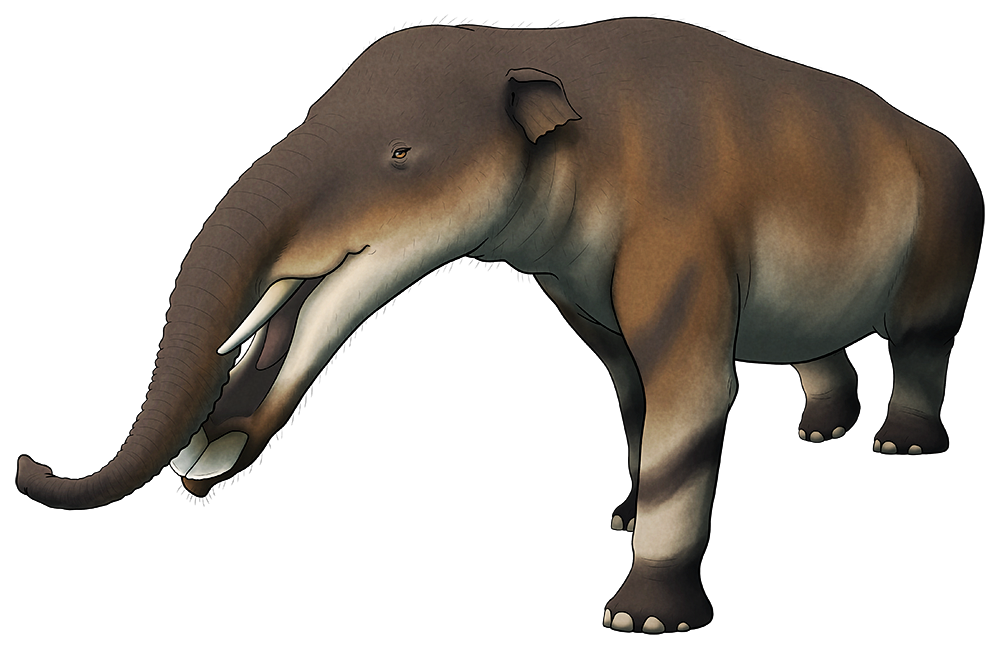With their odd-looking skulls, long tusks, and their noses and upper lips modified into tentacle-arm-like trunks, modern elephants are the sort of animal that would seem completely unbelievable if we only had fossils of them.
But not nearly as strange as some of their ancient relatives.
Platybelodon is probably the most famously weird member of the proboscideans (the group that contains both modern elephants and their extinct cousins), looking like some sort of deliberately outrageous speculative creature design.
Living during the mid Miocene, around 15-4 million years ago, several different species of Platybelodon ranged across Africa, Europe, Asia, and North America, with Platybelodon grangeri here known from abundant fossils in Asia.
These strange-looking proboscideans stood around 2.2m tall (7’3″) and had fairly standard elephant-like bodies, but also heads with bizarre-looking elongated lower jaws that ended in a wide flat shovel-like shape tipped by two flat tusks, leading to their nickname of “shovel-tuskers”.
It was originally interpreted as a swamp-dwelling animal using its weird jaw to scoop up soft aquatic vegetation, with a fairly short flat trunk. But more recent studies of the wear patterns on its teeth suggest it actually used them more like a scythe than a shovel, cutting through tough grasses and branches – a feeding style that would also require it to have a much more modern-elephant-like trunk, using it to hold on to plants while it was sawing through them.


